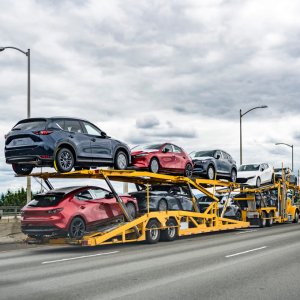Challenges for Parts Suppliers Include Globalization

STORY INLINE POST
Although the aftermarket offers growth possibilities both domestically and for export, each market’s needs could not be more different. While the export market demands pieces for newer models, the Mexican market relies heavily on pieces for older models.
According to Benjamín Centurión, Managing Director of Dacomsa, the vehicle park has seen an accelerated increase since 2010. INEGI in 2015 reported almost 40 million motorized vehicles registered in Mexico. This has translated into a more pressing need for spare parts, particularly once vehicles’ guarantees have expired. Despite the obvious business opportunity for Centurión’s company, it also poses a challenge: holding spare parts for cars that might be too old.
“The vehicle park in the country has been growing at record levels in recent years but this has not forced older cars to disappear. They are still in use and still need spare parts,” says Centurión. The longevity of the local vehicle fleet is undeniable. Mexico’s vehicle park is on average 17 years old, with 52 percent of registered vehicles being over 14 years old. This number is particularly high compared to the 11 years that US vehicles average or the median 13-year-old Brazilian vehicle park.
The complexity of catering to the Mexican market does not end with supplying parts for older vehicles. “The real challenge in our company has been supplying parts for the entire array of new cars that have entered the country since NAFTA came into effect,” says Centurión. He says that on some occasions OEMs introduce new cars but no spare parts to the market, which makes it harder for aftermarket suppliers to create the necessary products.
Once the product is developed it is easier to export, however. “Fortunately, production platforms are becoming homogenous worldwide so the same vehicles are sold in different countries. This gives us the opportunity to export our products to South America, the US and Europe,” says Centurión. Unlike the European and US market, the Mexican market is fairly open, which means that several types of products can be commercialized, including those of doubtful quality and imitations. Centurión assures us that the market’s self-regulatory processes do not allow these products to last long. “The market tends to debug itself and brands that couple quality products with good post-sale services prevail.”
Centurión predicts the existing relationship between the national industry and US products will impact prices to the benefit of Mexican manufacturers. “Though the economy is somewhat dependent on the price of the US dollar, national products with US materials or services included in their manufacturing will increase prices. But the increase will not be as hard-felt as that experienced by imported products,” says Centurión. “National manufacturers that offer quality products and services will see this situation as an opportunity to grow.”
Though uncertainty seems to be the rule for 2017, Centurión identifies several things to be considered when assessing the probable performance of the industry. “A weaker peso means more competitive exports, at least temporarily.” Another important consideration is that the aftermarket has its own dynamics, generally disassociated from automotive production cycles. “The aftermarket is more connected to direct demand from consumers rather than automotive industry cycles,” says Centurión. “If the economy does not grow or market liquidity is limited, users might postpone decisions regarding car repairs.”
Despite the industry’s atmosphere of uncertainty, the expected impacts of new US economic policies began to be defined during the first quarter of 2017. “The year 2017 is a complete enigma. So far, the automotive industry has been one of the country’s engines for development. If the industry faces deceleration, consequently the economy will slow down.” Even with the gloomy outlooks some have of 2017, Dacomsa expects to maintain stable sales numbers in 2017 although Centurión does not expect the company will beat 2016’s 8 percent growth rate. “Our plan to maintain our commercial situation is to remain close to our clients, final users, workshops, mechanics, retailers, distributors and small businesses. We want to understand their needs and what we can do to improve,” Centurión says.






















